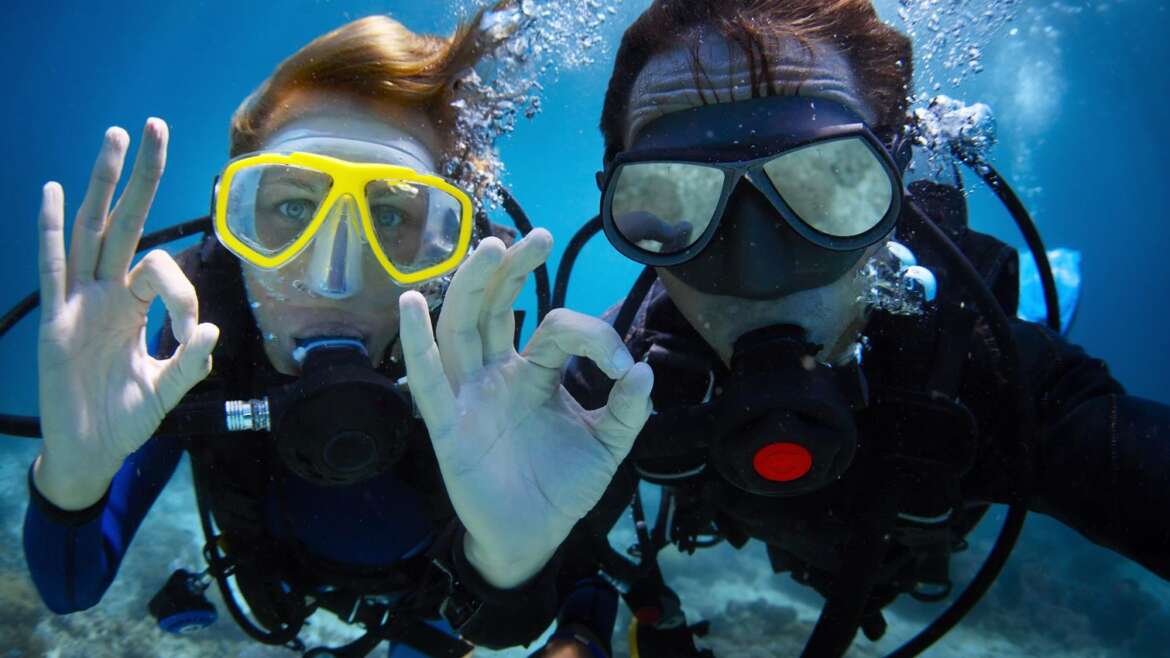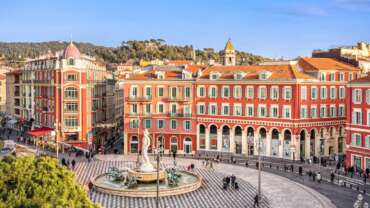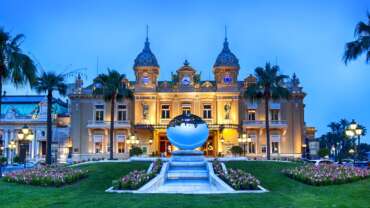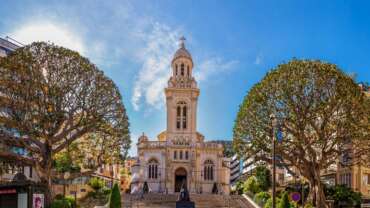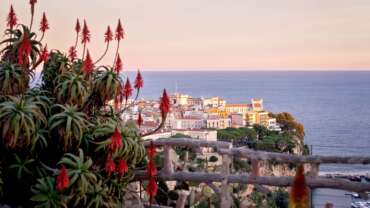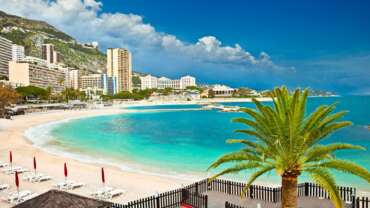Experiences in Monaco
Well being
Sun, Sea and Mountains: relaxing in the Principality is a genuine pleasure.
As much for practicing sport as for a fitness break, the many suitable facilities and beauty institutes available in Monaco, will meet all your requirements.
The gardens
The Princess Grace Rose Garden and the Exotic Garden may be among the best known, but the Principality has many parks and gardens to discover, including Princess Antoinette Park, the Japanese Garden, the St. Martin Gardens, the Little Africa Gardens, the Boulingrins Gardens, and the UNESCO Gardens on the Fontvieille Terraces… They are managed according to eco-friendly principles and are all distinctive in their own way, with very different atmospheres!
Exotic Garden of Monaco
High on the cliffs overlooking Monaco, the Exotic Garden is a showcase for the exuberance, strangeness and surrealism of nature.
Fontvieille Park
Fontvieille Park encircles the Big Top, providing the district with an urban landscaped park that is much appreciated by families. It features Mediterranean plants such as olive, pine and cypress trees alongside more exotic species like Strelitzias, Stenocarpus and Araucarias.
Princess Antoinette Park
Princess Antoinette Park is a special place – a hectare which is home to hundred-year-old olive trees. This “green lung” at the heart of the Principality is first and foremost a garden for children, offering activities suitable for all ages.
Princess Grace Rose Garden
Although it is located within Fontvieille Park, the Princess Grace Rose Garden is a completely separate garden.
Square Théodore Gastaud
Officially opened in 1923 and redeveloped in 2000 during construction of an underground car park, Square Gastaud owes its name to a Monegasque architect known for his political activities.
St Martin Gardens
The Principality’s first public garden, opened in 1816, was built on an abandoned plot in order to provide work for residents when famine hit the Principality.
The Casino Gardens
The gardens of the Société des Bains de Mer are very closely linked to the development of a particular part of the Principality of Monaco: Monte-Carlo. The area took off in around 1893 when the Casino was established on Spélugues rock, which was previously parched and bare.
The Japanese Garden
This garden, created in 1994 at the request of Prince Rainier III in accordance with the strictest principles of Zen design by landscape architect Yasuo Beppu (Grand Prix at the Osaka Flower Exhibition in 1990), transports visitors to the land of the rising sun, even as they remain in the Principality.
Zoological Gardens
Located on the southern flank of the Rocher, the Zoological Gardens were established in 1954 by Prince Rainier III.
Shopping
Monaco is unquestionably the international capital of luxury. The greatest names in fashion quickly established themselves in the Principality, haute couture, perfume, jewellery; the most beautiful finery has found its showcase in the Principality of Monaco.
Sport and Activities
Nothing could be easier in Monte-Carlo than to enjoy water sports in the Mediterranean, from the more traditional to more uncommon ones, anything is possible in Monte Carlo !
Invigorating activities available in the Principality include windsurfing, water skiing, wake boarding, banana boats, jet skis, parascending, Larvotto Beach and Monte Carlo Beach. Sailing is within easy reach with the enthusiastic professionals of the Monaco Yacht Club.
Museums
Monaco proudly bears the standard of dreams and glamour around the world but it is, above all, a tourist destination with a remarkable heritage and an outstanding wealth and variety of sites, museums and excursions.
Cars collection of HSH the Prince of Monaco
Located on the Terrasses de Fontvieille, this remarkable exhibition brings together almost a hundred cars of all ages, produced by the top European and American manufacturers, as well as six coaches belonging to H.S.H. Prince Rainier III of Monaco.
A little history
In the late 1950s, Prince Rainier III, who was passionate about cars, began to collect vintage vehicles. Over the years, as acquisitions were made, the collection grew and very soon the garage at the Prince’s Palace proved too small to house the hundred or so beautiful cars, some sporty, others statuesque in silhouette, with their majestic bodywork, gleaming bonnets and regal grilles!
And so in 1993, Prince Rainier III decided to unveil his treasures to the public.
This exhibition, covering an area of 5,000 m2 and unlike anything else in the world, features a collection of some one hundred cars, from the 1903 DE DION BOUTON to the 2013 LOTUS F1, not forgetting makes and models such as HISPANO SUIZA, ROLLS ROYCE, LINCOLN, FACEL VEGA, DELAGE, DELAHAYE, PACKARD, HUMBER, NAPIER, FERRARI, MASERATI, LAMBORGHINI, ALFA ROMEO, the LEXUS from the 2011 Royal Wedding, and more. Also on display are race cars which have competed in the Rallye de Monte-Carlo and the Monaco F1 Grand Prix.
Museum of Prehistoric Anthropology
The Museum of Prehistoric Anthropology was founded by Prince Albert I in 1902 “to conserve traces of early humankind exhumed in the Principality and neighbouring regions.”
The numerous collections which have been brought together in the Museum over more than a century represent the various phases of regional prehistory and protohistory. The majority of the archaeological and palaeontological exhibits come from the Principality and neighbouring areas (France and Italy).
A little history
Following a long series of excavations in the Grimaldi Caves (1895–1902), ordered and financed by Prince Albert I, it became necessary and indispensable to have a single place where all of the items found could be kept in order to preserve and exhibit them.
The first Museum of Prehistoric Anthropology was located on the Rocher.
In 1902, Prince Albert I chose the former Government House building for the Museum and appointed Canon Léonce de Villeneuve as Director.
In 1960, the Museum of Prehistoric Anthropology moved to a new building in the middle of the Exotic Garden. The Museum’s new home was designed by Monegasque architect Louis Rué. The scientific research and archaeological digs carried out by a succession of teams from the Museum (L. Barral, S. Simone) will further enrich the institution’s collections.
The collections on display enable visitors to trace the major steps in the evolution of humanity through the various glacial and interglacial periods. They teach us that over a million years ago, the French Riviera was already a favoured habitat for our ancient ancestors.
As a research institute, the Museum continues to conduct field digs, carry out laboratory studies and publish an annual scientific bulletin.
Museum of Stamps and Coins
The Museum, of contemporary design, houses rare stamps depicting the Principality’s postal history, as well as all the documents which have been used in the stamp-printing process from the first Charles III stamp in 1885 to the present day.
The Museum of Philately and Coinage is open daily from 10 am to 5 pm (6 pm in July and August). It sells currently available stamps and coins issued by the Principality.
A little history
Established by Sovereign Ordinance of Prince Rainier III next to Espace Léo Ferré in Fontvieille in December 1995, the Museum of Philately and Coinage opened to the public in January 1996 and celebrated its twentieth anniversary in 2016.
Every two years, the Museum hosts the international MONACOPHIL exhibition, which attracts the most prestigious philatelists from around the world.
The first Monegasque stamps were issued by Prince Charles III in 1885. The Principality was then a member of the Universal Postal Union and issued stamps under the Convention Concerning the Customs Union and Neighbourly Relations concluded with France on 9 November 1865 pursuant to the Treaty of 2 February 1861.
The first Monegasque coins were issued in January 1640 by Prince Honoré II, with reference to the Nice system introduced by the Duke of Savoy. In October 1643, Louis XIV granted Honoré II the right to freely circulate his gold and silver coins in France, on the condition that they were aligned to the corresponding French coins. This rule was extended in 1865 to cover all Monegasque coins until the introduction of the euro on 1 January 2001. Today, “Monegasque euros” circulate throughout the euro zone and the Principality has an annual quota under the same conditions as all other member countries of the zone.
The Museum is a first-rate cultural institution, and also a commercial operation. Its shop sells Monegasque stamps and coins as well as other related products such as books, enamels, scarves and so on. A mail order service has been set up; catalogues are available from the Museum.
Naval Museum
Monaco’s Naval Museum is the result of one man’s passion. From a very early age, Professor Claude Pallanca dreamed of sailing and meticulously built model ships. During his military service, he was assigned to the Jeanne d’Arc as a dental surgeon, where he established friendships with many sailors and naval officers, and his passion for boats and the sea grew.
A little history
Over the years, he gathered and built a remarkable collection, which, thanks to assistance from H.S.H. Prince Rainier III of Monaco, the Monegasque Government and the friendship of His Excellency Mr Bernard Fautrier and Mr Charles Ballerio, culminated in 1993 in the creation of the Naval Museum, a veritable encyclopaedia of all things maritime.
Monaco’s Naval Museum, founded in 1993, exhibits an extraordinary collection of more than 250 model ships, paintings and maritime objects, dating from ancient times to the present day and enriched by the loan of numerous antique models from the magnificent personal collection of H.S.H. Prince Rainier III of Monaco.
In its entirety, the collection includes more than 1,200 scale models as well as hundreds of navy-related objects. Furthermore, over the last few years Professor Pallanca has added to this unique collection with paintings illustrating ships and aircraft from the Second World War. He currently has 550.
The foremost characteristic of the Naval Museum is that it is an international museum, dedicated to all navies from ancient times to our own era. Among the most remarkable exhibits, you can see a funerary boat found in an Egyptian tomb, classical Roman and Greek vessels, and liners such as the Titanic and the France. Also on display are models of training ships such as the Amerigo Vespucci and the Belem, not to mention numerous warships, from the Jeanne d’Arc to the battleship Missouri, via impressive aircraft carriers like the Nimitz, which is more than five metres long. The Museum also has a large number of submarines from a variety of different countries, as well as a minelayer and a Maiale manned torpedo from the Second World War.
Nouveau Musée National de Monaco - Villa Paloma
The Nouveau Musée National de Monaco (NMNM) showcases the heritage of the Principality of Monaco and promotes contemporary works of art through temporary exhibitions at its two locations: Villa Paloma and Villa Sauber. This approach is rooted in a unique country whose history has always been characterised by a dialogue between artistic, scientific and cultural disciplines, and support for designers, thinkers and researchers.
A little history
According to the information which is currently available, it was an American, Edward N. Dickerson, who combined six plots of land belonging to different owners in 1913 to construct a villa and create a garden on Boulevard de l’Observatoire in the Révoires area of Monaco. It is believed that there was already a pavilion on the main plot, and that this was sold by Mr Eugène Roganne, a sculptor and ornamentalist.
The villa, named Villa Coquette by Mr Dickerson, was three storeys high. Some people maintain that the architect was the famous Sébastien Marcel Biasini, but since he passed away in 1913, this seems highly unlikely.
Having been sold for the first time in 1920, the Villa was purchased in 1925 by Englishman Robert W. Hudson, whose father had founded a liquid soap factory back in England. On his retirement, Robert Hudson was in possession of a comfortable fortune and bought the Villa in 1925. Following his marriage to Béatrice Sabina Gaudengio in 1932, it became Villa Paloma. It is said that Béatrice already had a house called Villa Paloma in Cap d’Ail and that she wanted to retain the name for the villa in Monaco. Robert W. Hudson was renowned in Monaco for his great generosity. In 1937, he created a Foundation which bore his name and which sought to promote learning of the English language in the Principality.
Having suffered severe damage during the Second World War, the Villa was in a very poor state when it was purchased by Mr Joseph Fissore on Mrs Hudson’s death in 1950. Following their marriage, the Fissores undertook major renovation work, put in a swimming pool and restored the garden, which had been abandoned.
In 1993, a Monegasque company purchased the villa from the Fissore family. It was sold on to the State of Monaco two years later. In 2008, a decision was taken to give it over to the Nouveau Musée National de Monaco.
Villa Paloma remains one of the most beautiful aristocratic residences in the Principality. Although we cannot be certain of the precise date it was created, it is known that the Villa’s garden was entrusted to Octave Godard, the most talented student of renowned landscape artist Edouard André (1840–1911). Godard turned it into a “classical-style garden”, something of a speciality of his. The stained-glass windows in the grand entrance hall were made by master glazier Fassi Cadet of Nice.
Nouveau Musée National de Monaco - Villa Sauber
The Nouveau Musée National de Monaco (NMNM) showcases the heritage of the Principality of Monaco and promotes contemporary works of art through temporary exhibitions at its two locations: Villa Paloma and Villa Sauber. This approach is rooted in a unique country whose history has always been characterised by a dialogue between artistic, scientific and cultural disciplines, and support for designers, thinkers and researchers.
A little history
Villa Sauber is one of the last Belle Epoque villas in Monaco. Its precise date of construction is not known, but it is well established that it belonged to the Blanc family in the early 1900s. The family played a key role in the development of the Société des Bains de Mer and the Casino de Monte-Carlo.
At that time, the area which bordered the waterfront was known as the Quartier des Bas-Moulins, and Larvotto Beach did not yet exist. The newly acquired property extended down to the path which runs alongside the sea. The painter Robert Sauber purchased the villa from Edmond Blanc in 1904. Given the similarities between this building and the Opera House constructed during the same period by Charles Garnier, there has often been a temptation to attribute the villa to the famous Belle Epoque architect.
Sauber, originally from London, set up his studio in the villa’s west wing. He and his wife would continue to own the property, now known as Villa Sauber, for 10 years. They sold it shortly before war was declared in 1914. It then passed through several hands before the Saubers bought it back in 1925.
In the early 1930s, the by then elderly Sauber couple bequeathed the villa to the Court Funds of the City of London Police.
The Court Funds retained ownership of the villa for around 15 years until it was purchased by Miss Nora Mac Caw in 1952. Miss Mac Caw sold it to the Société Immobilière de l’Avenue Princesse Grace in 1957, from which Monaco’s Société Immobilière Domaniale finally purchased it in 1969. The house and garden have remained the property of the State of Monaco ever since.
Oceanographic Museum of Monaco
Built on the side of Monaco’s legendary Rocher, the Oceanographic Museum founded by H.S.H. Prince Albert II of Monaco’s great-great-grandfather Prince Albert I has been watching over the oceans for more than a century. The Museum is renowned throughout the world for its expertise and has more than 6,000 specimens on display.
From the flourishes on the façades to the décor in the halls, every aspect of the Museum’s architecture evokes the marine world. Since it was opened on 29 March 1910, this Temple of the Sea, 6,500 square metres of which are open to the public, has been an international benchmark for loving, protecting and raising awareness of the oceans.
THE AQUARIUMS
– A journey through the tropics: the tropical zone reveals the hectic life of a coral reef and the species which inhabit it, featuring enchanting shapes and colours. Come face to face with sharks and piranhas, observe the clownfish and the awe-inspiring stonefish with its lethal spines, and admire the captivating boxfish or bizarre sea horses.
– Dive into the Mediterranean Sea: discover more than 200 species of invertebrate in the pools representing the Mediterranean, a sea which is home to hidden treasures. Come and meet our clever octopus, tremble before our sinister moray eels, or admire the soothing ballet of the jellyfish.
THE MUSEUM
– Whale Room and Prince Albert I Room: a voyage of oceanographic discovery, with many mounted specimens, photographs and archive documents, models, marine mammal skeletons, etc.
– Oceanomania: the largest ever cabinet of marine world curiosities, created by artist Mark Dion. More than 1,000 objects from the Oceanographic Museum’s collections are displayed in a 180-square-metre space: fossils, chimaeras, diving gear, valuable books etc.
A little history
A sailor and pioneer in the field of oceanography, attracted to travel and science from a very young age, Prince Albert I led 28 scientific campaigns, dedicating a large part of his life to studying the oceans. To promote the growth and development of oceanography, a science which was still in its infancy in the early twentieth century, he decided to set up a special foundation, the Institute of Oceanography. Established in 1906, this renowned foundation operating in the public interest has two aspects: the Oceanographic Museum of Monaco and the Maison des Océans in Paris. On board ever more advanced vessels (Hirondelle, Princesse Alice, Princesse Alice II and Hirondelle II), this visionary Prince travelled the Mediterranean, visited the Azores, then embarked on an Arctic adventure to Spitsbergen.
Prince’s Palace
The Prince’s Palace in Monaco is a private residence, but the State Apartments are open to visitors for part of the year.
The Palace has a long history and has been extended and renovated several times over the centuries. Its origins date back to the early thirteenth century – 1215 to be exact. Following a succession of transformations, the ancient Genoese fortress became one of the most luxurious residences of the seventeenth century, in a style extremely characteristic of the Louis XIV era.
Prince Honoré II assembled substantial collections of artworks here, which unfortunately disappeared during the French Revolution, when the Palace was looted and used as a hospital for troops from the Italian Army.
Today, it is possible to admire the splendours of the Palace, including: the Palace Chapel, dedicated to St. John the Baptist, the Hercule Gallery, the Mirror Gallery, the Red Room, the York Room, the Yellow Room or Louis XV Bedroom, and the Throne Room, as well as numerous frescoes, tapestries, and items of furniture.
The Museum of "Vieux Monaco"
This museum is open free of charge on Wednesdays and Fridays from 11am to 4pm between June and September.
It displays objects relating to Monaco’s heritage; ceramics, paintings, furniture and costumes, and sets out scenes of daily life in days gone by on “Le Rocher”.
In 1924, representatives of old Monegasque families, who wished to fight against the risk of losing their national identity, set up “Le Comité National des Traditions Monégasques” (The National Committee of Monegasque Traditions), which includes in its missions:
– The preservation of civil and religious traditions
– The preservation and promotion of the Monegasque language
– The preservation of the Monegasque heritage
Civil and religious traditions have been maintained. Even though the Monegasque language is not in everyday use any longer, it is taught in the schools in Monaco and can be taken as a subject in the baccalaureate. It is also taught to adults so as to encourage families to use it on a day-to-day basis.
In the future, the fundamental missions needed to preserve Monegasque identity will be strengthened by another priority close to the heart of the committee: the preservation of the material heritage, by means of the Musée du Vieux Monaco, and, as well, the immaterial heritage, thanks to the diffusion of Monegasque language and culture through modern methods such as the internet.



